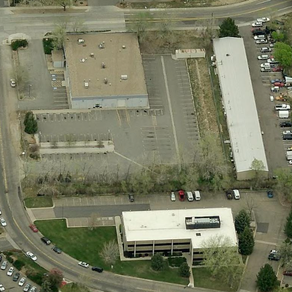Denver's Development Problem
- DENVER YIMBYs for GOOD
- Jan 3, 2021
- 4 min read
Updated: Jan 7, 2021
Denver's City Council and leaders have been working hard to pave the way for development to transform all of Denver's last remaining green spaces and affordable homes into density housing. Our city leaders have been encouraging development at all costs, removing obstacles like height restrictions, and allowing community gardens and open space to disappear under concrete and buildings.

Check out this article from the Denver Post, which describes how our leadership has quickly changed our Denver green landscapes into buildings for as far as the eye can see. It's almost funny that now the city council now says that we need to plant more trees to combat the heat island effect, when it is the city who is paving the way for the pavement.
Denver looks to tree-planting to help shade city as heat islands grow and new greenspace proves elusive
Here's an excerpt from the article that drives this point home:
Creating open greenspace with trees, grasses and plants — instead of heat-radiating pavement — can help cool residents along sun-scorched streets, draw down heat-trapping carbon dioxide and clean the air. However, Denver since 1998 has veered from its founders’ vision of being “a city within a park,” falling behind most other major cities in greenspace. Roughly 8% of Denver’s 155 square miles has been designated as parkland, compared with 21% in New York, 23% in San Diego, 15% in Minneapolis and 13% in Los Angeles, data from the Trust for Public Land shows. Read full article »

If you've been feeling that Denver has changed for the worse in recent years, you're right. The giant purple cloud that now shades Denver regularly has been caused by our non-stop development and increase of population over the past 10+ years. Where we used to have sunny days, we're now seeing more and more “cloudy” days as the air pollution worsens and smogs the air. There is a giant purple cloud that now hangs perpetually over downtown including City Park, Park Hill and Congress Park neighborhoods. You can see if if you come in from the south. No one is really talking about it yet, but the reduced sunshine becomes more and more obvious every year. In the summer, the concrete heat islands of density housing amplifies the summer temperatures and the thousands of new housing units all crank up their hot, rumbling air conditioners to try to cool off. Cars clog the streets and contribute to our growing smog problem.
Denver is in the top 10 in the nation for having the worst air pollution. Much of this pollution comes from vehicles and the non-stop demolition and construction. For example, there are millions of people driving through the Eisenhower Tunnel – get this: 1,194,222 vehicles drove through the tunnel in January 2020, and 11,274,606 total vehicles in 2020, which was a slow year due to COVID. In 2019 there were a total of 13,114,913 vehicles, and in 2018 there were 13,114,913 vehicles driving through the tunnel. This constant flow people driving vehicles everyday up I-70 to escape to the mountains are only adding to that purple smog cloud. And, as Denver's development problem grows and density increases, the number of cars driving daily to the mountain will only continue to grow. Developers tout that people will take public transportation, but we all know that there is no affordable or convenient public transportation to the mountains – so nearly every household has a car so they can escape the noise and pollution of our city under construction.

Loss of Denver's Green Space
Part of what made Denver great was the large amount of green space within our city, including large lots and parks and gardens tucked into neighborhoods. The city of Denver has allowed developers to pave over many of these community gardens, landscapes and green spaces nearly everywhere in Denver. The latest green space on the chopping block is El Oasis Community Garden, which, despite the fact that it was donated to the Denver Urban Gardens non-profit organization with the promise that it will be a green space in perpetuity for the neighborhood, it is instead being sold off to a developer or 1.2 million dollars to build luxury duplexes over the beloved garden plots. They will leave a sliver of the garden left, likely in the shade of the looming boxy duplex buildings, but this community oasis will never be the same.
Do the Denver City Planners or City Council care about this loss of green space? Nope. They are all too happy to grant permits for the destruction of the last of the green spaces in our communities. Why? Because more living units means more property taxes. Bending to the will of the developers likely brings with it promises of political campaign funding and high paying positions.

Denver continues to grant permits to cover every inch of open space, and continues to remove obstacles to make it even easier to build higher and cover more ground. They are allowing developers to build taller buildings at the cost of the property owners around them. The taller buildings shade landscapes and homes around them, creating winter-long ice and snow patches that never see the light of sun, and increase heating bills in the cold days of winter. Denver allows our landfills to fill up with quality building materials from demolished beautiful, small, affordable homes, so that cheap, quickly constructed density housing could be erected in their place.
Our Denver City Council and City Planners should be ashamed of themselves. Despite the opposition of nearly every resident who lives here, they have pushed through zoning changes, permitted developers to gobble up and destroy our last remaining affordable homes and green spaces – all for one thing, money.








Comments